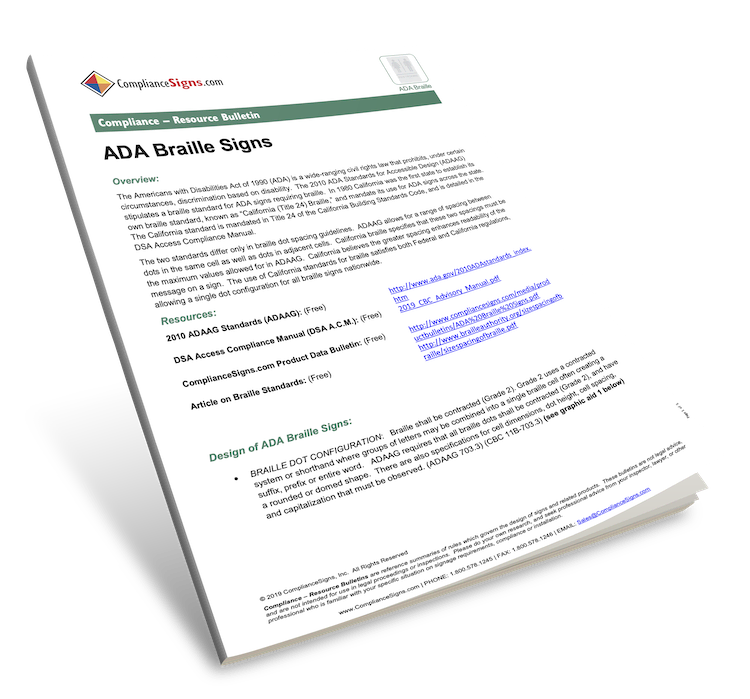
What to Know About ADA Braille Signs
Our ADA Braille Signs Compliance – Resource Bulletin will help you understand some of the rules and regulations regarding sign standards required under the Americans with Disabilities Act of 1990 (ADA), as outlined in the ADA Standards for Accessible Design (ADAAG).
Topics include:
- ADA and California Title 24 Braille standards
- Braille sign design
- Capitalization
- Characters and pictograms
- Visual characters and symbols
- Sign layout
- Sign location and installation
- Where Braille signs are required
Click the image to open this bulletin as a pdf file.
Bulletin Overview
The Americans with Disabilities Act of 1990 (ADA) is a wide-ranging civil rights law that prohibits, under certain circumstances, discrimination based on disability. The 2010 ADA Standards for Accessible Design (ADAAG) stipulates a braille standard for ADA signs requiring braille. In 1980 California was the first state to establish its own braille standard, known as “California (Title 24) Braille,” and mandate its use for ADA signs across the state. The California standard is mandated in Title 24 of the California Building Standards Code, and is detailed in the DSA Access Compliance Manual.
The two standards differ only in braille dot spacing guidelines. ADAAG allows for a range of spacing between dots in the same cell as well as dots in adjacent cells. California braille specifies that these two spacings must be the maximum values allowed for in ADAAG. California believes the greater spacing enhances readability of the message on a sign. The use of California standards for braille satisfies both Federal and California regulations, allowing a single dot configuration for all braille signs nationwide.
Compliance – Resource Bulletins are reference summaries of rules that govern the design of signs and related items. These bulletins are not legal advice, and are not intended for use in legal proceedings or inspections. Please do your own research and seek professional advice from your inspector, lawyer or other professional who is familiar with your specific situation on signage requirements, compliance or installation.


